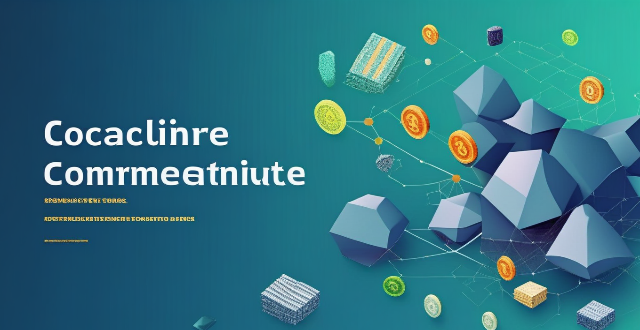Compliance Infrastructure

How does risk management relate to compliance and regulatory requirements ?
Risk management and compliance are interconnected aspects of organizational operations, aimed at safeguarding against potential losses and legal issues. Risk management identifies and prioritizes risks impacting objectives, while compliance ensures adherence to laws and regulations. An integrated approach enhances efficiency, and collaboration between departments is key for success. Regulatory requirements significantly influence risk management and compliance strategies, with direct rules and indirect environmental changes. Understanding these dynamics is vital for maintaining reputation and avoiding compliance breaches.

How are international climate agreements enforced, and what are the consequences of non-compliance ?
Enforcement of international climate agreements is crucial for mitigating the effects of climate change. The enforcement relies on mechanisms such as monitoring and reporting, peer review, financial incentives, and consequences of non-compliance. Countries are required to report their greenhouse gas emissions and progress towards meeting their commitments, which are reviewed by other countries and experts. Peer review helps identify any issues or discrepancies in the reported data and promotes transparency and accountability. Financial incentives, such as access to funding for climate action projects, can encourage compliance. Non-compliance can have significant consequences, including loss of credibility, economic impacts, legal actions, loss of funding, and reputational damage. Enforcement mechanisms rely heavily on voluntary compliance and cooperation between nations.

What are the challenges in building a nationwide charging network ?
**Summary:** Building a nationwide charging network for electric vehicles (EVs) presents several challenges that can be categorized into technical, infrastructure, financial, and social/environmental aspects. Technical challenges include ensuring scalability, compatibility, reliability, energy management, and fast charging capabilities. Infrastructure challenges involve achieving comprehensive coverage, site selection, infrastructure development, land use and zoning compliance, and maintenance operations. Financial challenges encompass high initial costs, return on investment, funding sources, pricing strategies, and economic viability assessment. Social and environmental challenges include gaining public acceptance, education and awareness, minimizing environmental impact, ensuring equitable access, and regulatory compliance. Addressing these challenges is crucial for the successful implementation and long-term success of a nationwide charging network for EVs.

What are the penalties for non-compliance with data protection regulations ?
Non-compliance with data protection regulations can result in significant penalties, including fines, legal action, and damage to a company's reputation. The specific penalties depend on the jurisdiction and the severity of the violation. Some common consequences include: - Fines and Financial Penalties: GDPR violations can result in fines up to €20 million or 4% of global annual turnover for less severe infringements, and up to €40 million or 8% of global annual turnover for more serious violations. CCPA violations can result in fines up to $2,500 per violation for each time a Californian resident's rights are violated, and up to $7,500 per violation if the violation involves selling or sharing personal information without consent. - Legal Action: Class action lawsuits initiated by individuals or groups may claim damages for non-compliance, with potential for large settlements depending on the number of affected parties and the severity of harm caused. Government investigations may involve possible subpoenas and audits to assess compliance levels and potential violations, as well as enforcement actions such as cease and desist orders or demands to implement corrective measures. - Reputational Damage: Loss of trust from customers when data breaches occur can erode customer faith in a company's ability to protect their information, and negative publicity from data misuse can permanently harm a company's brand image. Difficulty in partnerships and deals may arise, with other companies ending collaborations due to associated risks, and potential investors being wary of putting money into a company with known compliance issues. - Market Access Restrictions: In extreme cases, a company might be prohibited from handling certain types of data, and some regions might restrict entry to companies that have a history of non-compliance. - Corrective Measures and Costs: Technical and organizational changes may be required, such as upgrading systems to ensure compliance with technical standards like encryption and security protocols, and employee training to improve understanding of data protection laws and best practices. Legal fees for representation in legal proceedings or during investigations, and settlement payments to resolve class action lawsuits or government enforcement actions, may also be necessary. It is crucial for organizations to prioritize data protection compliance as part of their business strategy to avoid these adverse effects.

What are the most effective ways to measure compliance with building energy efficiency standards ?
The topic summary for the text is "Measuring Compliance with Building Energy Efficiency Standards". The text discusses various methods used to assess a building's energy efficiency, including energy audits, building performance monitoring, third-party verification, benchmarking, energy efficiency ratings, and regulatory compliance checklists. Each method has its own advantages and can be used in combination to ensure that buildings meet minimum requirements for energy efficiency and contribute to reducing their environmental impact.

What types of infrastructure are needed to support widespread use of electric vehicles ?
The widespread adoption of electric vehicles necessitates the development and expansion of various types of infrastructure to support their charging needs, including public and residential charging stations, energy infrastructure, information systems, maintenance and support services, and urban planning and design.

How do government policies influence the growth of electric vehicle infrastructure ?
Government policies play a crucial role in shaping the growth of electric vehicle (EV) infrastructure. These policies can be broadly categorized into regulatory, financial, and informational measures. Regulatory policies set standards and mandates that must be followed by businesses and consumers, while financial incentives and disincentives are powerful tools used by governments to encourage the adoption and expansion of EV infrastructure. Information plays a vital role in shaping consumer behavior and market dynamics, with governments leveraging this by providing relevant data and promoting awareness. In conclusion, government policies across regulatory, financial, and informational domains have a profound impact on the growth of electric vehicle infrastructure.

Are there any potential drawbacks or challenges with implementing network slicing ?
Network slicing is a promising technology that allows multiple virtual networks to coexist on a shared physical infrastructure. It enables operators to provide tailored network services for different use cases, such as enhanced mobile broadband (eMBB), ultra-reliable low-latency communications (URLLC), and massive machine-type communications (mMTC). However, there are potential drawbacks and challenges associated with implementing network slicing, including the complexity of management and orchestration, significant infrastructure investment required, standardization and interoperability issues, skill gap within organizations, and regulatory and legal aspects to consider.

How does the availability of electric vehicle infrastructure impact the environmental benefits of EVs ?
Electric vehicle infrastructure plays a pivotal role in maximizing environmental benefits. Adequate charging networks reduce range anxiety, increase EV usage, and support optimal charging times for minimal carbon footprints. Renewable energy integration through solar and wind power further enhances green initiatives. Smart urban planning and design facilitate seamless EV adoption, while consumer behavior shifts with improved infrastructure, promoting eco-friendly habits. The development of robust and innovative EV infrastructure is crucial to fully realize the environmental potential of electric vehicles.

What is the current state of electric vehicle infrastructure in major cities ?
The current state of electric vehicle (EV) infrastructure in major cities varies significantly depending on the region and local government policies. However, there are some common trends and challenges that can be observed across different urban areas. One of the most important aspects of EV infrastructure is the availability of charging stations. In many major cities, the number of public charging stations has increased rapidly in recent years, but they are still not as widespread as gas stations for traditional vehicles. This can make it difficult for EV owners to find a convenient place to charge their vehicles, especially if they live in apartment buildings without dedicated parking spots or garages. Another key factor is the speed at which EVs can be charged. While most EVs come with standard Level 1 or Level 2 charging capabilities, which take several hours to fully charge the battery, more advanced fast charging technology is becoming increasingly available. These fast chargers can replenish an EV's battery much more quickly, making them ideal for road trips or long-distance travel. However, the availability of fast chargers is still limited in many cities, and they tend to be concentrated along major highways rather than in urban areas. The cost of charging an EV can also vary widely depending on location and time of day. In some cities, public charging stations may offer free or discounted rates during off-peak hours to encourage EV adoption. However, these incentives are not always available, and some drivers may find that the cost of charging their EV is higher than expected, especially if they rely heavily on public charging stations. Finally, the accessibility and usability of EV infrastructure is another important consideration. Some cities have made significant investments in building out their EV infrastructure, including installing dedicated EV parking spots and providing real-time information about available charging stations through smartphone apps. However, other cities may still lag behind in terms of accessibility and usability, making it more difficult for EV owners to take full advantage of their vehicles' capabilities.

What are the economic implications of investing in climate-resilient supply chain infrastructure ?
This article explores the various economic implications of investing in climate-resilient supply chain infrastructure. It highlights how such investments can lead to cost savings, increased productivity and efficiency, improved insurance rates, enhanced supply chain visibility, and competitive advantage. The article also emphasizes the importance of building a strong brand reputation and accessing new markets through sustainable and resilient practices. Overall, it underscores the significance of prioritizing investments in climate-resilient supply chain infrastructure for businesses and economies around the world.

What challenges do ecological protection areas face in terms of enforcement and compliance ?
生态保护区在执行和合规方面面临的挑战包括资源不足、法律框架不健全、社区抵抗和文化差异。解决这些问题需要增加资金投入、加强立法、促进与当地社区的互动和跨文化理解,以保护自然生态系统并确保其长期可持续性。

What is the significance of green infrastructure in managing urban runoff and improving water quality ?
Green infrastructure (GI) is a sustainable approach that uses natural processes to manage stormwater, reduce pollution, and enhance the overall health of urban ecosystems. It plays a crucial role in managing urban runoff and improving water quality. Some benefits of GI include reducing stormwater runoff, improving water quality, enhancing habitat and biodiversity, and mitigating climate change impacts. To effectively implement green infrastructure in urban areas, factors such as site selection, design considerations, and maintenance and management should be considered. Proper maintenance and management are essential for ensuring the long-term success of green infrastructure projects. By implementing effective green infrastructure practices, cities can create healthier, more resilient environments for both people and wildlife.

How does extreme weather impact energy infrastructure and what measures can be taken to improve resilience ?
The impact of extreme weather on energy infrastructure is significant, causing damage to power plants, transmission lines, and distribution systems. This can lead to power outages, fuel supply disruptions, infrastructure degradation, increased maintenance costs, and environmental concerns. To mitigate these impacts, proactive measures such as strengthening infrastructure, diversifying energy sources, upgrading technology, preparing for emergencies, and investing in microgrids can be taken. Reactive measures include rapid repair and recovery, emergency response teams, communication systems, insurance and financial aid, and lessons learned from each event. By implementing these measures, the resilience of energy infrastructure can be improved, minimizing negative impacts on society and the economy.

How does the development of electric vehicle infrastructure affect the adoption rate of EVs ?
The development of electric vehicle infrastructure, including charging stations and supporting technologies, significantly influences the adoption rate of EVs. Availability and accessibility of charging stations are critical factors affecting EV adoption rates. Increased availability and reduced range anxiety can lead to higher demand for EVs and boost their adoption rate. Easy-to-find and accessible charging stations make it easier for potential EV owners to plan their trips and charge their vehicles as needed. The cost of charging an EV also affects its adoption rate, with affordable pricing and transparent pricing information encouraging more people to adopt EVs. Overall, the growth of electric vehicle infrastructure is crucial in determining the adoption rate of EVs.

What are the economic implications of the decisions made at climate summits ?
Climate summits like the UNFCCC COP have far-reaching economic implications, affecting sectors from energy to infrastructure and trade. Decisions made at these events can influence investment patterns, job creation, and national economies. Key impacts include shifts towards renewable energy, green innovation, changes in infrastructure, adjustments in fiscal policies, alterations in international trade dynamics, effects on natural resource management, and increased regulatory compliance costs. These decisions are crucial as they help shape a sustainable and climate-resilient global economy.

Why is climate risk management important for businesses and organizations ?
Climate risk management is crucial for businesses and organizations due to its impact on operations, financial implications, reputational considerations, legal and compliance obligations, and ethical responsibilities. Supply chain disruptions, physical asset damage, regulatory changes, insurance costs, investor pressure, capital at risk, public perception, stakeholder engagement, leadership opportunities, compliance with laws, contractual obligations, sustainability goals, and intergenerational equity are all affected by climate change. Proactive climate risk management can protect assets, maintain investor confidence, uphold reputation, meet compliance requirements, and fulfill ethical responsibilities to current and future generations.

What strategies can urban planners employ to create more resilient sports infrastructure in the face of climate change ?
The article discusses strategies for creating resilient sports infrastructure in the face of climate change. These include conducting thorough climate risk assessments, incorporating green infrastructure, designing for flexibility and adaptability, ensuring energy efficiency and sustainability, strengthening infrastructure, improving water management, planning for long-term maintenance and upkeep, and engaging stakeholders and promoting community awareness.

How can we ensure compliance with environmental legislation ?
Ensuring compliance with environmental legislation is crucial for protecting the planet and its inhabitants, and can be achieved through education and training of stakeholders, developing and implementing policies, monitoring and reporting performance, and collaborating with stakeholders.

What are the legal implications of managing digital identities ?
Managing digital identities raises various legal implications including privacy laws, intellectual property rights, liability for misuse or breach, and compliance with industry standards. To ensure compliance, organizations must implement technical and organizational measures to safeguard personal information, obtain necessary permissions for proprietary information, mitigate liability risks through robust security policies, and adhere to identity management best practices.

What role do private companies play in building and operating EV charging networks ?
Private companies play a pivotal role in the development and operation of electric vehicle (EV) charging networks, contributing to infrastructure development, network operation, partnerships and collaboration, and data analysis and optimization. They are involved in planning, design, construction, technology innovation, maintenance, management, customer service, pricing strategies, public-private partnerships, industry alliances, community engagement, performance tracking, and market research. Their efforts ensure that EV charging infrastructure is developed efficiently, innovatively, and with the end-user in mind.

What role do data protection officers play under data protection laws ?
Data protection officers (DPOs) are crucial for ensuring compliance with data protection laws in organizations. They advise on compliance, develop policies, ensure adherence to regulations, educate stakeholders, and act as a point of contact for personal data requests.

How can I ensure that my sports facility is compliant with all relevant regulations and standards ?
To ensure your sports facility's compliance with all relevant regulations and standards, you should research and understand the applicable rules, conduct a compliance audit, develop a plan to address any non-compliant areas, train your staff, and maintain compliance over time.

What is the General Data Protection Regulation (GDPR) ?
The General Data Protection Regulation (GDPR) is a comprehensive data privacy law that governs how personal information is collected, processed, and stored by organizations within the European Union (EU). It was designed to protect the rights of individuals and ensure their personal data is handled securely and transparently. Key features of GDPR include data minimization, consent, transparency, data portability, right to erasure, data protection officers (DPOs), and penalties for non-compliance. Benefits of GDPR compliance include enhanced trust between organizations and customers, risk mitigation through strong data protection measures, competitive advantage in the EU market, and increasing global relevance as other countries adopt similar laws. Challenges of GDPR compliance include complexity, cost, cultural differences leading to confusion and potential non-compliance, and technological limitations. In conclusion, the General Data Protection Regulation (GDPR) is a crucial piece of legislation that aims to protect the privacy rights of individuals within the European Union. While it presents both benefits and challenges for organizations, compliance with GDPR has become an essential aspect of modern business operations in today's digital age.

How can small food businesses ensure they are compliant with food safety regulations ?
The text provides a comprehensive guide on how small food businesses can ensure compliance with food safety regulations. It emphasizes the importance of compliance in protecting consumer health, avoiding legal consequences, and enhancing brand reputation. The steps for ensuring compliance include understanding the regulations, training staff, implementing GMP, using quality ingredients, monitoring and testing, and having a plan for non-compliance. Following these steps can help small food businesses meet legal requirements and assure customers of the highest standards in food safety, ultimately leading to customer loyalty and a strong brand reputation.

How has technology improved food safety monitoring and compliance ?
This article discusses how technology has played a crucial role in enhancing food safety measures. It covers traceability systems, sensor technology, data analytics, automation and machine learning, and blockchain technology. Traceability systems allow for the tracking of products from farm to table using barcodes, QR codes, and RFID tags. Sensors monitor various parameters that impact food safety, such as temperature, humidity, and chemical composition. Data analytics tools process vast amounts of collected data to identify patterns, trends, and potential risks. Automated systems reduce human error and increase efficiency in food processing plants, while machine learning algorithms enhance decision-making processes based on learned behaviors from past data. Blockchain offers a decentralized way to record transactions securely and transparently when applied to food supply chains. By leveraging these technological advancements, we can work towards a future where food safety concerns are minimized, benefiting both consumers and industry stakeholders alike.

How can governments regulate the use and disposal of harmful chemicals ?
Governments can regulate the use and disposal of harmful chemicals through legislation, education and awareness programs, and enforcement and monitoring. Laws and regulations should cover all aspects of chemical management, including registration, labeling, restrictions on use, safe handling, waste management, and penalties for non-compliance. Public education campaigns and training programs can help businesses and consumers understand the risks associated with harmful chemicals and how to safely handle and dispose of them. Regular inspections and audits can ensure compliance with laws and regulations, identify potential hazards, and verify that proper safety measures are in place. Reporting and record-keeping requirements can also help government agencies monitor chemical management practices and ensure compliance with regulations.

How does GDPR affect international businesses ?
The General Data Protection Regulation (GDPR) has significant implications for international businesses, affecting everything from data collection and processing to customer communication. Key aspects include its territorial scope, consent requirements, appointment of Data Protection Officers (DPOs), Data Subject Access Rights (DSAR), cross-border data transfers, and potential fines and penalties for non-compliance. Companies must take proactive steps to ensure compliance with GDPR to avoid costly fines and penalties while building trust with customers and partners.

What measures should be taken to ensure compliance with biosafety policies in laboratories and research facilities ?
Ensuring biosafety compliance in laboratories and research facilities is crucial for the protection of personnel, the environment, and research subjects. Measures such as regular training sessions, competency assessments, clear policies and procedures, proper use of personal protective equipment (PPE), effective waste management, and well-developed emergency response plans should be implemented to create a safe working environment.

How do I choose a reliable cryptocurrency exchange platform ?
This guide offers a comprehensive checklist for selecting a trustworthy cryptocurrency exchange platform, emphasizing security measures, user interface, trading volume and liquidity, fees, coin support, regulation compliance, and reputation. It encourages potential users to consider factors such as two-factor authentication, cold storage, encrypted data, regular audits, clean layout, mobile accessibility, customer support, high trading volume, liquid markets, transparent fee structures, available coins, trading pairs, licensed operations, AML and KYC compliance, as well as online reviews and community feedback to make an informed decision.